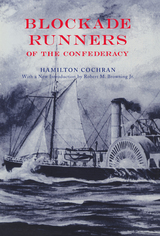
A readable, exciting chronicle of the men and ships that ran federal naval blockades during the Civil War
Within four weeks of the fall of Fort Sumter, President Abraham Lincoln had declared a blockade of over four thousand miles of Confederate coastline, from Cape Henry in Virginia to the Mexican border. In response, professional runners, lured by both profits and patriotism, built faster, sleeker, low-profile ships and piloted them through the ever-thickening Northern cordon. The tonnage they imported, including items ranging from straight pins to marine engines, sustained the South throughout the conflict. This exciting chronicle of the men and ships that ran federal naval blockades during the Civil War also provides an overall assessment of the blockades conception, effectiveness, and impact on the Southern populace.
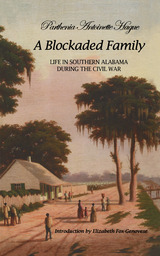
Parthenia Hague experienced the Civil War while employed as a schoolteacher on a plantation near Eufaula, Alabama. This book recounts how a frightened and war-weary household dealt with privations during the blockade imposed on the South by the federal navy. The memoir of Parthenia Hague is a detailed look at the ingenious industry and self-sufficiency employed by anxious citizens as the northern army closed in.
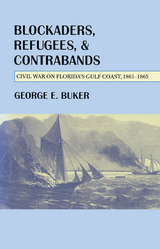
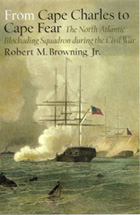
Examines naval logistics, tactics, and strategy employed by the Union blockade off the Atlantic coast of the Confederacy.
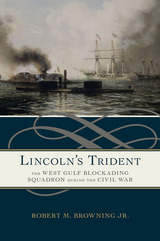
The history of the squadron comprises myriad parts and players, deployed in a variety of missions across the thousand-mile-wide Western Theater. From disorganized beginnings, the squadron’s leaders and sailors had to overcome setbacks, unfulfilled expectations, and lost opportunities. Browning masterfully captures the many variables that influenced the strategic choices of Navy commanders as they both doggedly pursued unchanging long-term goals as well as improvised and reacted to short-term opportunities.
Notable among its leaders was David Glasgow Farragut, believed by many to be America’s greatest naval hero, who led the squadron through most of the war and the climactic Battle of Mobile Bay. Under his legendary leadership, the squadron not only sealed Confederate sea ports, but also made feints and thrusts up the Mississippi River as far north as Vicksburg, Mississippi.
Knowing the Navy’s role in isolating the Confederate economy and preventing the movement of troops and supplies within the South is crucial to understanding of the outcomes of the Civil War, as well as the importance of naval power in military conflicts. With thirty-five maps and illustrations, Lincoln’s Trident expounds upon an essential part of the Civil War as well as naval and American history.
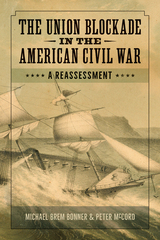
Swashbuckling stories of the Union naval blockade of the Southern states and the blockade runners who smuggled goods to the Confederacy have long been a part of the romanticized image of the Civil War. Throughout the war, Lincoln’s blockade and attempts to breach it touched nearly every aspect of the war effort. The Union prevented crucial material from reaching Confederate forces, while blockade runners smuggled hundreds of thousands of guns to rebel armies. No other military campaign lasted as long or had as many long-term consequences on the outcome of the Civil War.
Covering more than three thousand miles of Southern coastline and employing the services of 100,000 sailors, the blockade was a massive undertaking largely dictated by two Atlantic powers: Great Britain and the United States. Michael Bonner and Peter McCord build on the extensive scholarship of the blockade and incorporate previously unexamined British primary sources to deliver a fresh analysis of the Union blockade, blockade-running, and a reassessment of the blockade’s effectiveness. Their multifaceted study reassesses several key aspects of a “critical component of Union strategy,” including diplomatic and legal issues and the significance of the Confederacy’s reliance on European supplies to sustain the war effort.
The authors present statistics showing that the blockade was not nearly as effective as is commonly believed; moreover, its successes against steam-powered blockade runners actually decreased as the war went on. The diversity and comprehensiveness of coverage makes The Union Blockade in the American Civil War an essential work for Civil War historians and students.
READERS
Browse our collection.
PUBLISHERS
See BiblioVault's publisher services.
STUDENT SERVICES
Files for college accessibility offices.
UChicago Accessibility Resources
home | accessibility | search | about | contact us
BiblioVault ® 2001 - 2024
The University of Chicago Press









